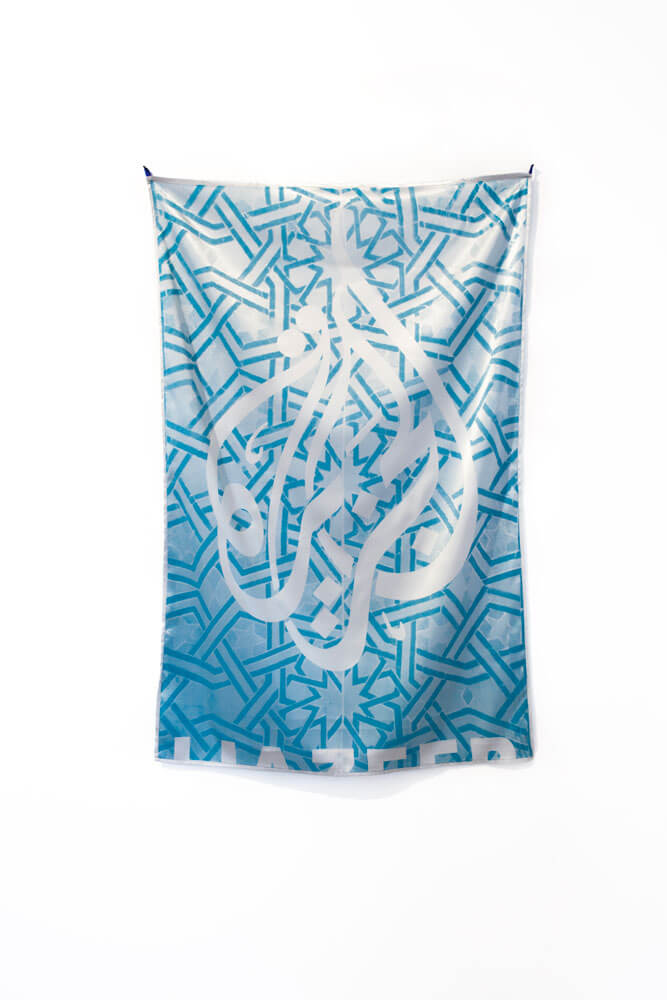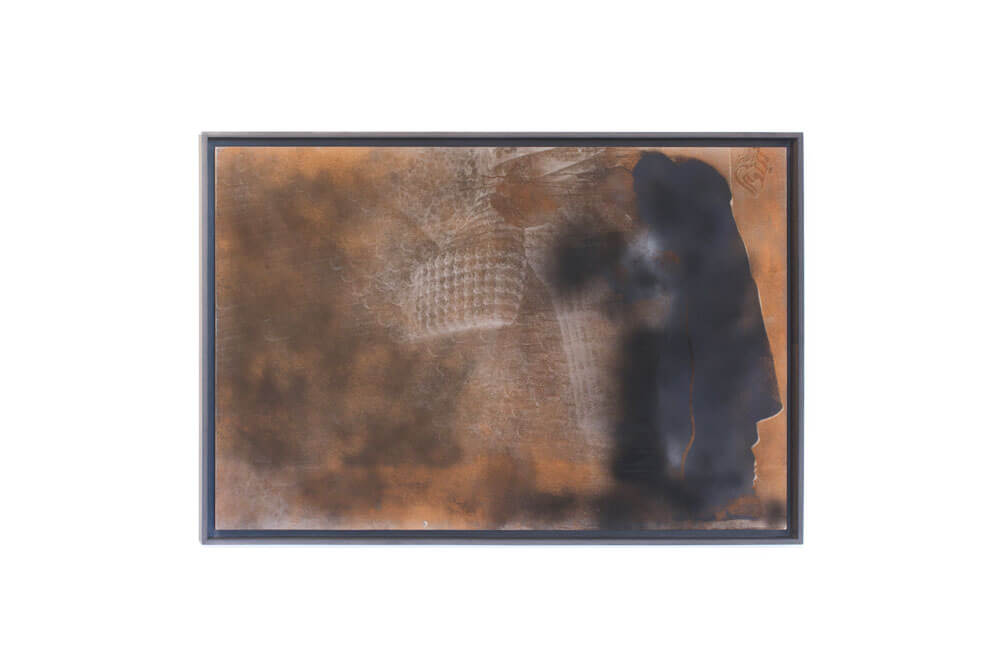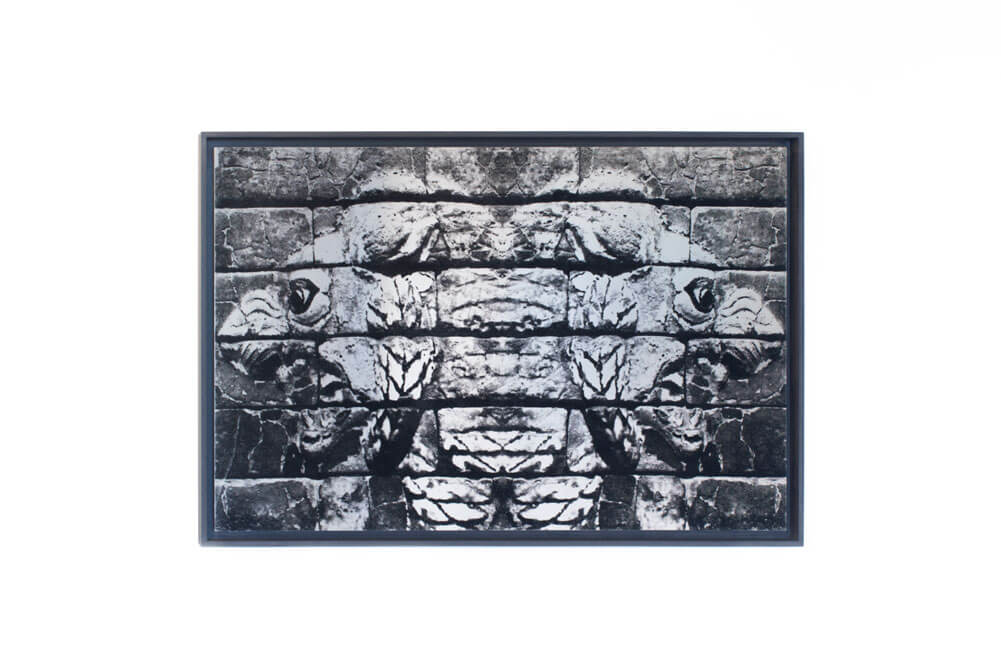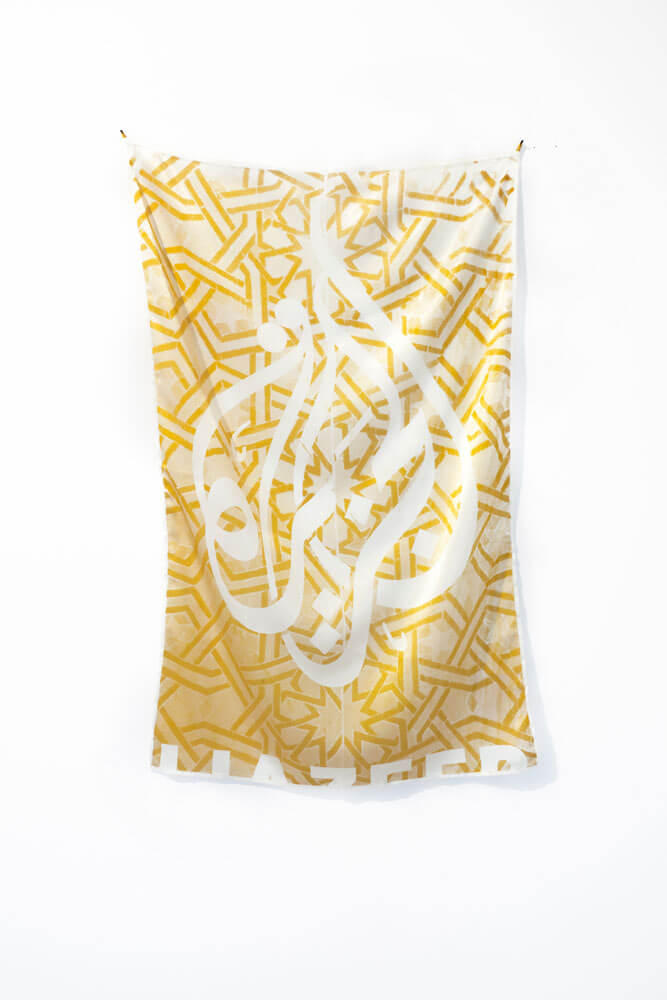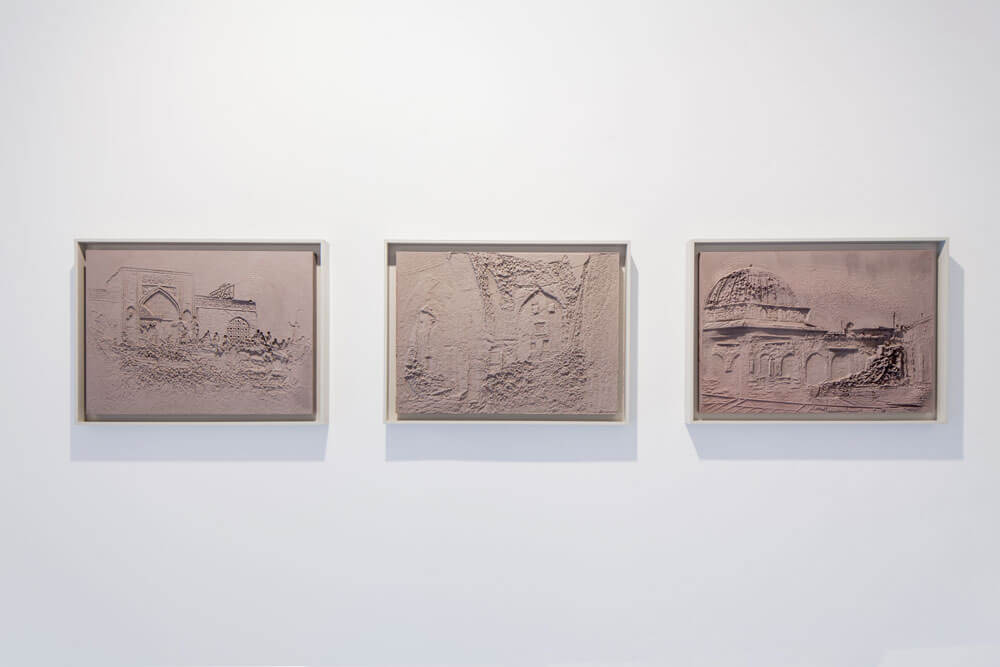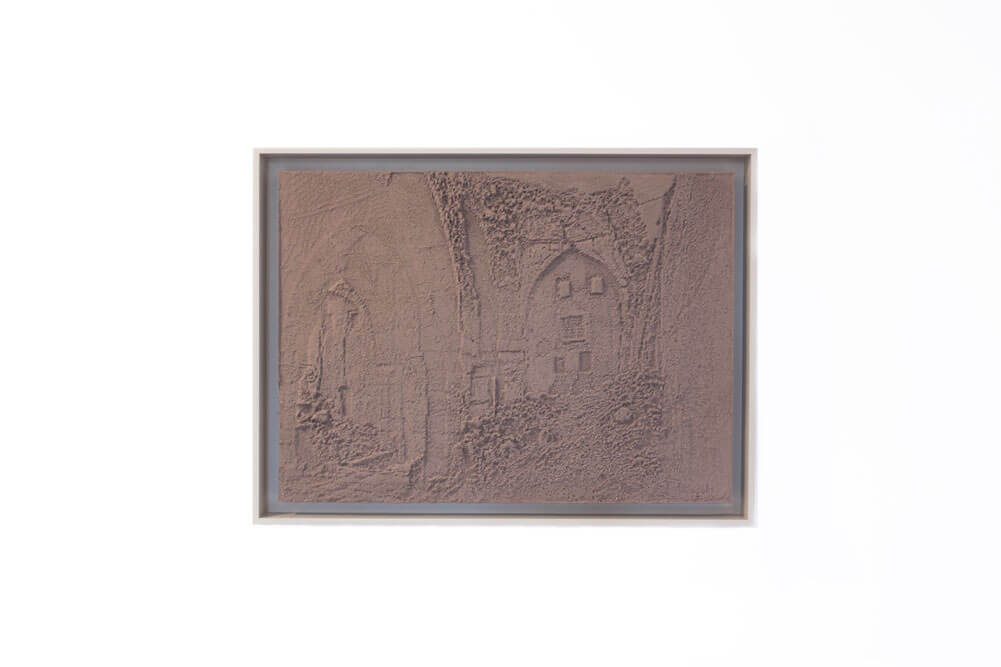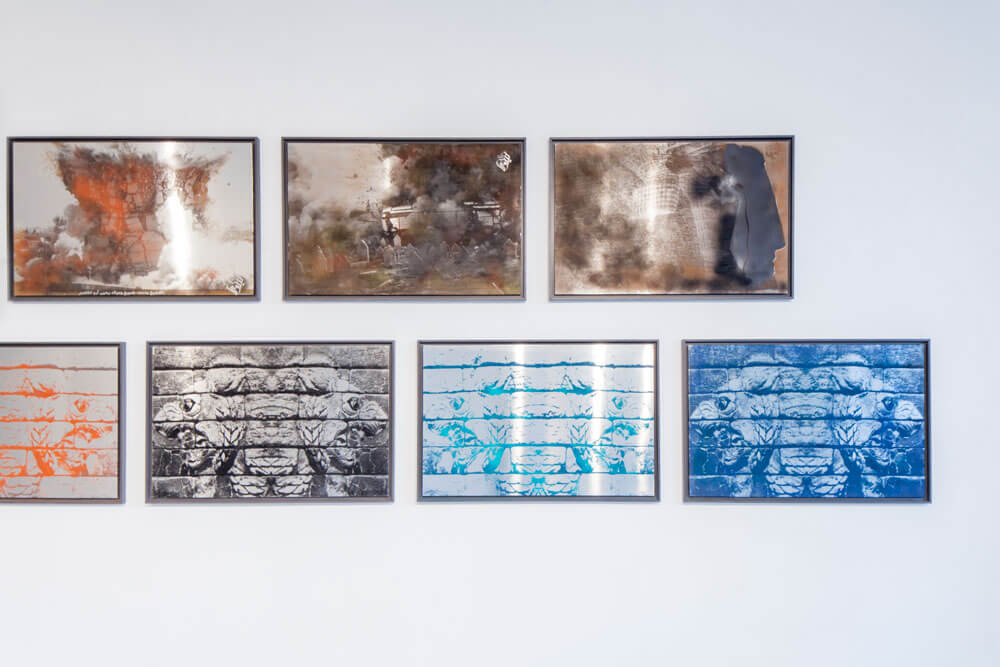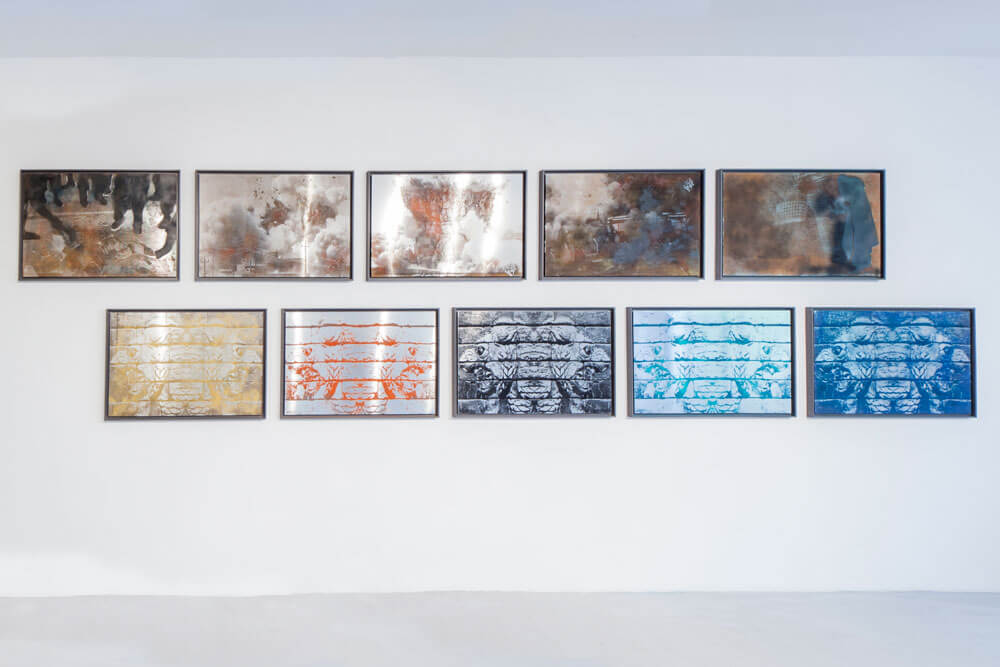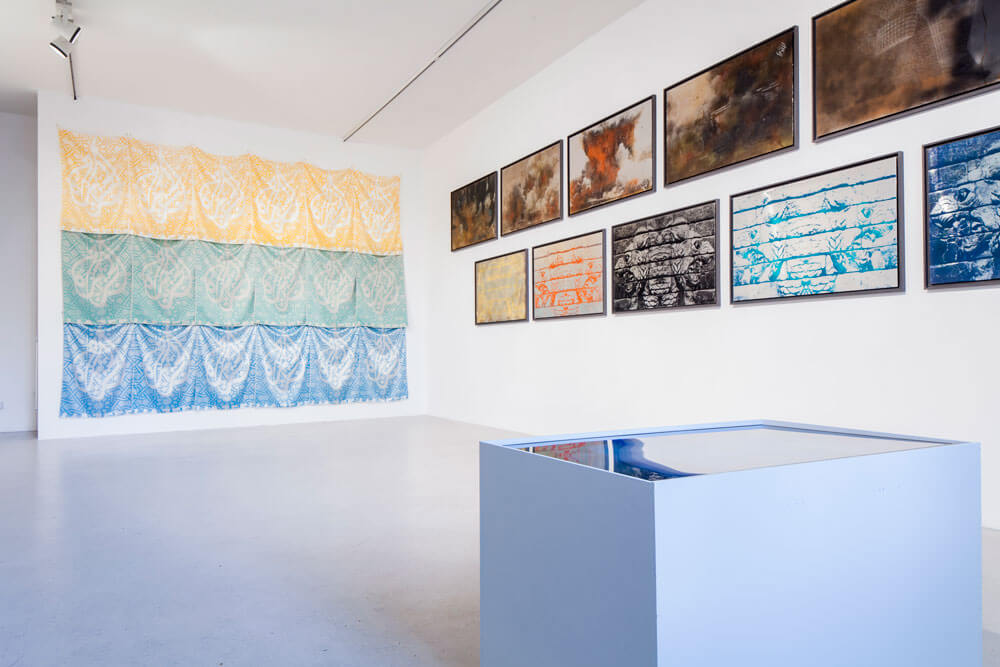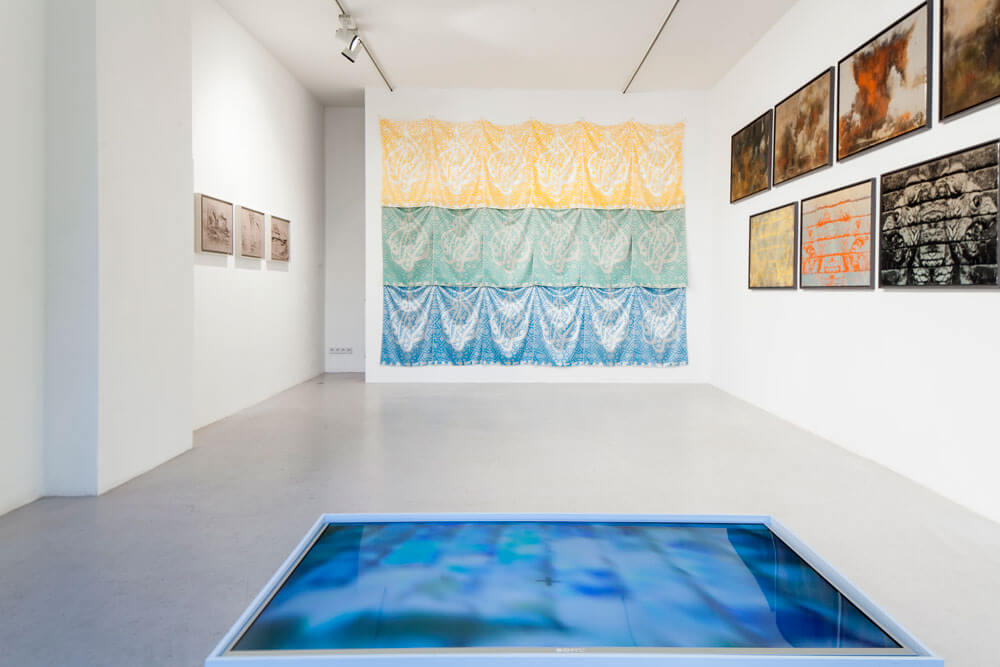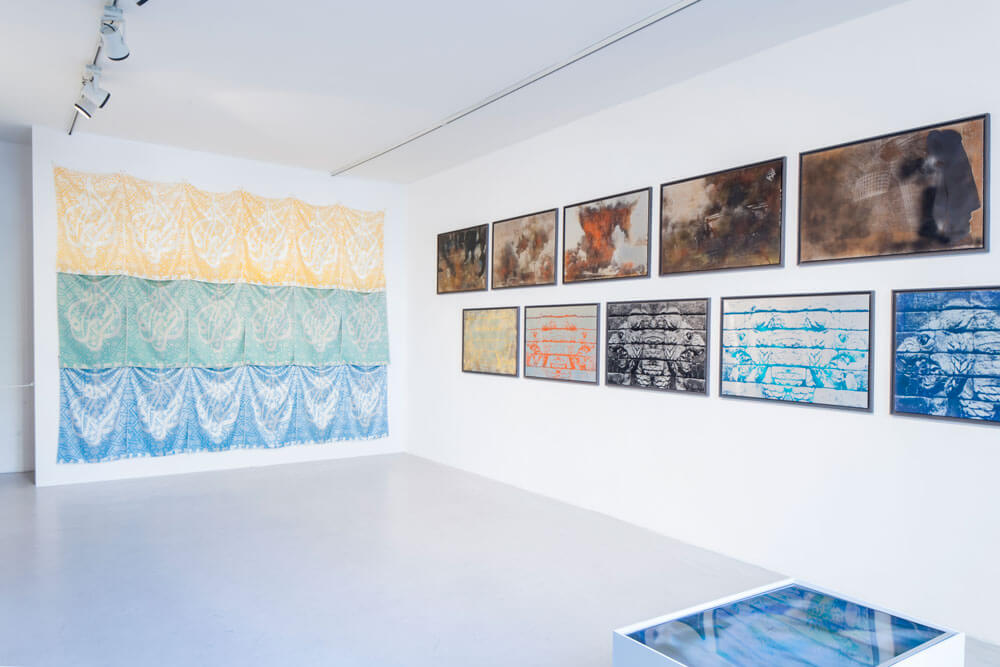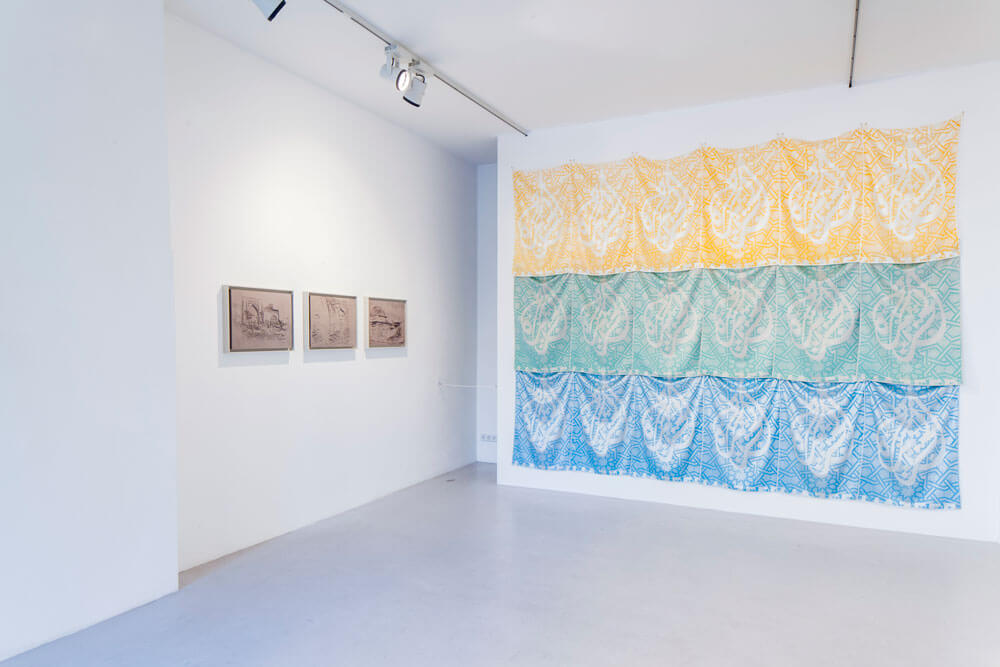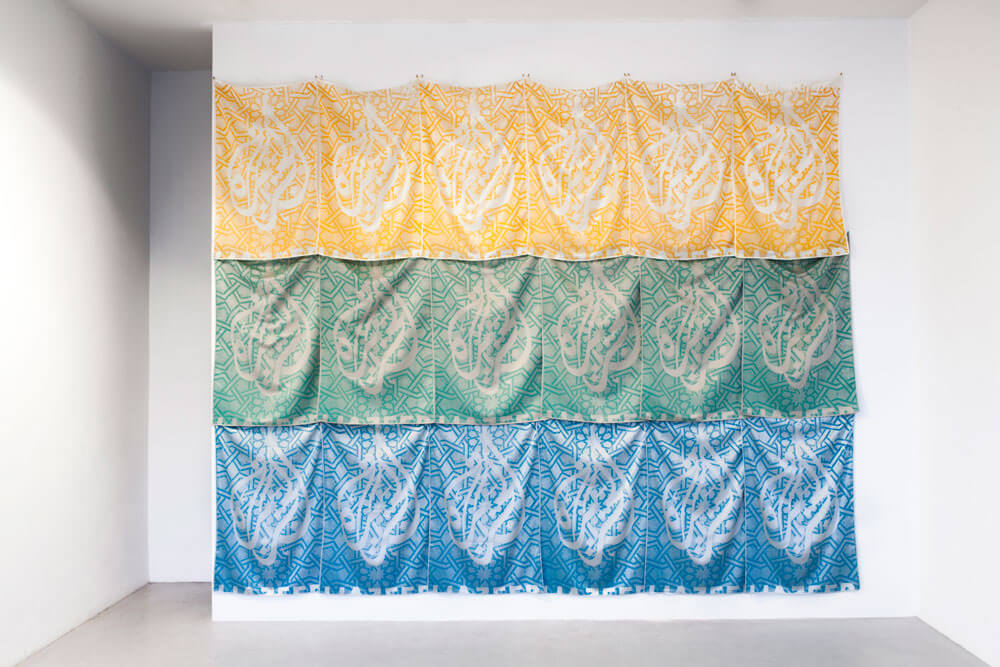Fattal’s images and objects may, on first sight, seem innocent yet, when reproduced within the framework of his abiding concern with the fragility of life and culture, their associations become redolent of either barbarism or mortality; sometimes of both at the same time. In this respect he has become a protagonist of the cultivation and exposition of what could be described as memory subsumed within continuing life of objects: fragments of the past living on and transformed by the present. His Jewish-Iraqi descent (both his parents were born in Baghdad, and he is first generation Israeli), as well as his current life as an artist in Berlin, have heightened a sense of tension that runs throughout his work, balancing delicately between the necessities for atonement and reconciliation.
The triptych light box Three Shadows (2010), with its related pigment prints, took as its starting point a photograph of the shadow of a man on a ladder that had been left behind by the white heat of the atomic blast in Hiroshima; The Touch of Your Lens (2012) is comprised of three transfer drawings based on uniformly smiling photographs of young women taken during World War II by Hugo Jaeger, Adolf Hitler’s personal photographer. These depict Eva Braun, Hitler’s lover, and two anonymous women: a Polish nurse in a prison camp, and a Jewish woman in a Polish concentration camp. They all smile in a similar way, but obviously experienced radically different situations and fates. The three black sheets of used carbon paper that enabled each image to be copied stand like gravestones directly beneath each portrait.
